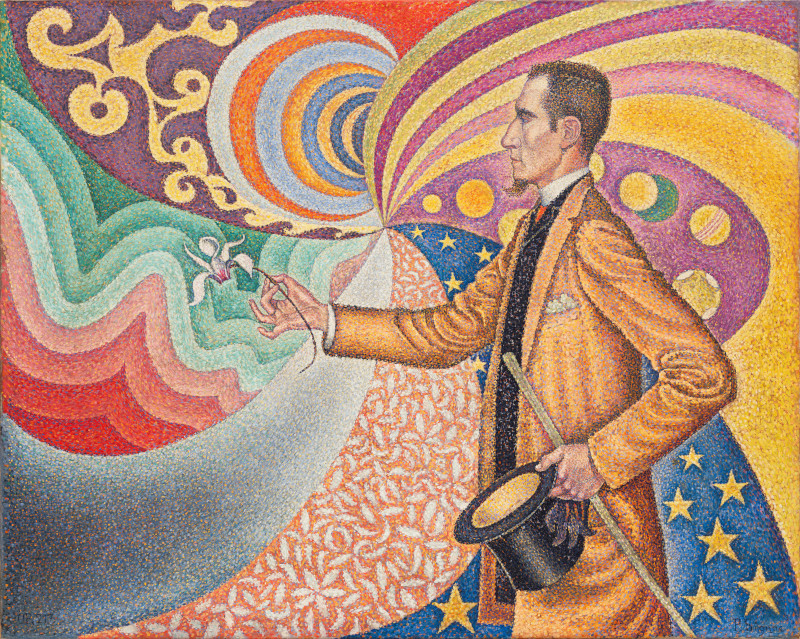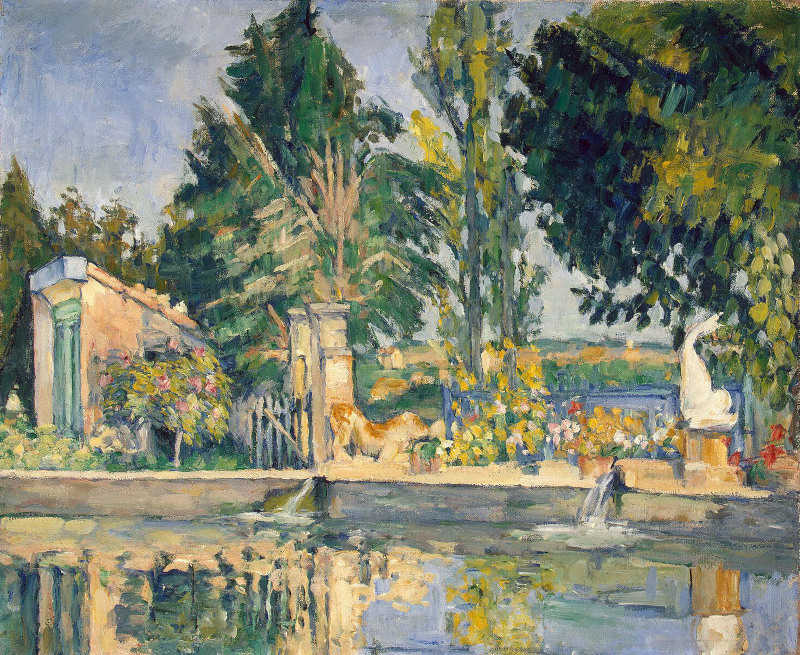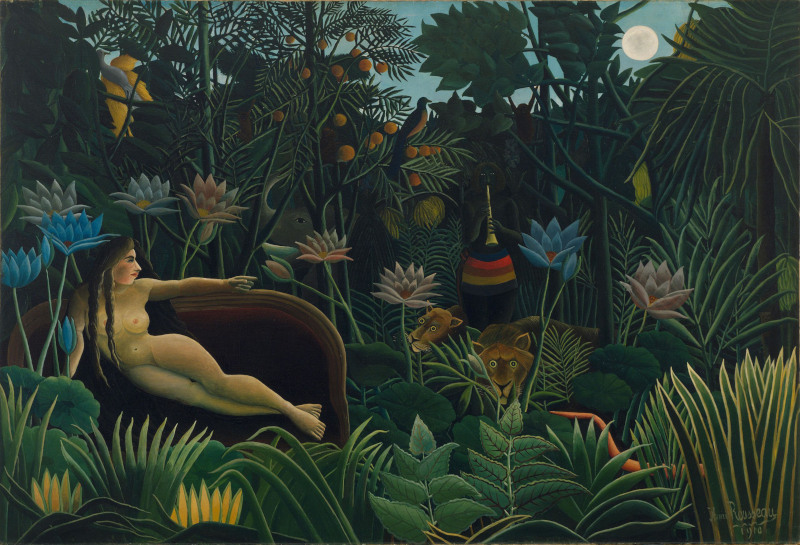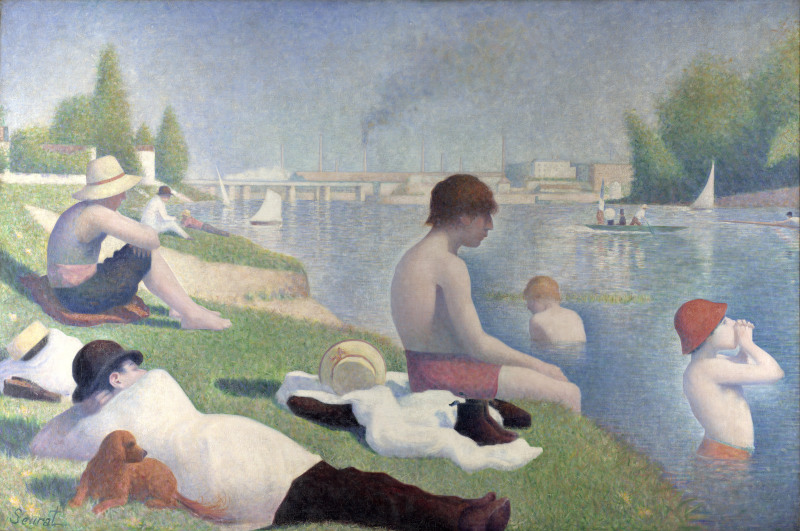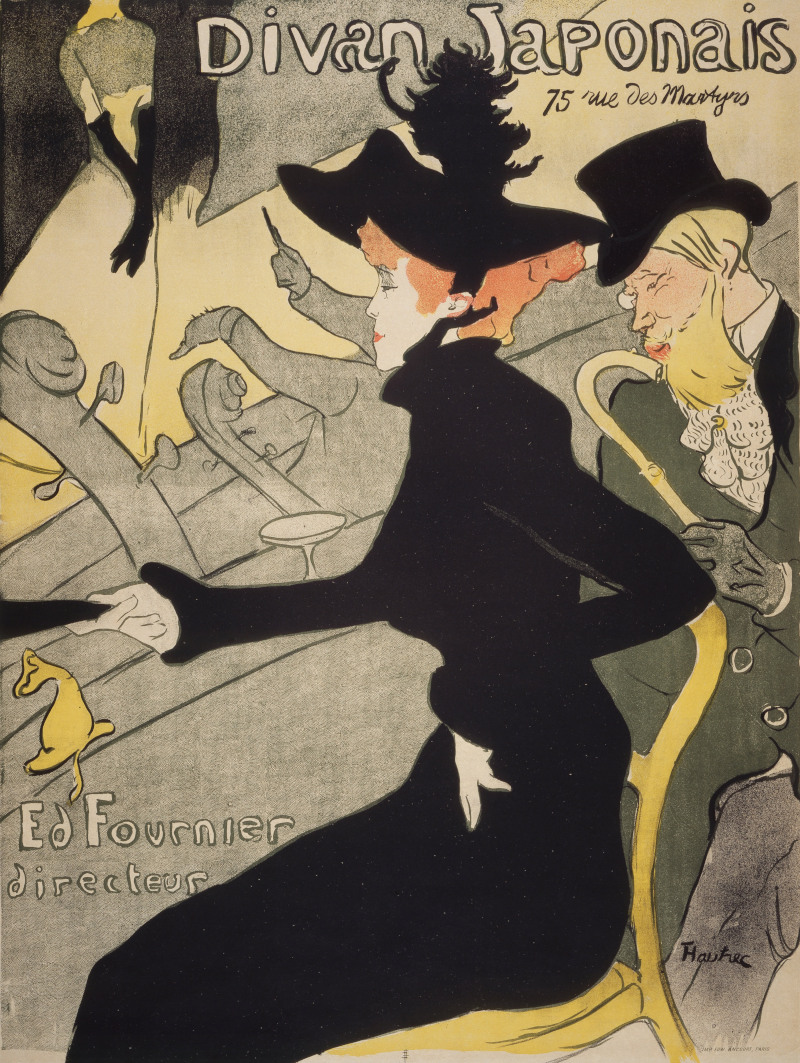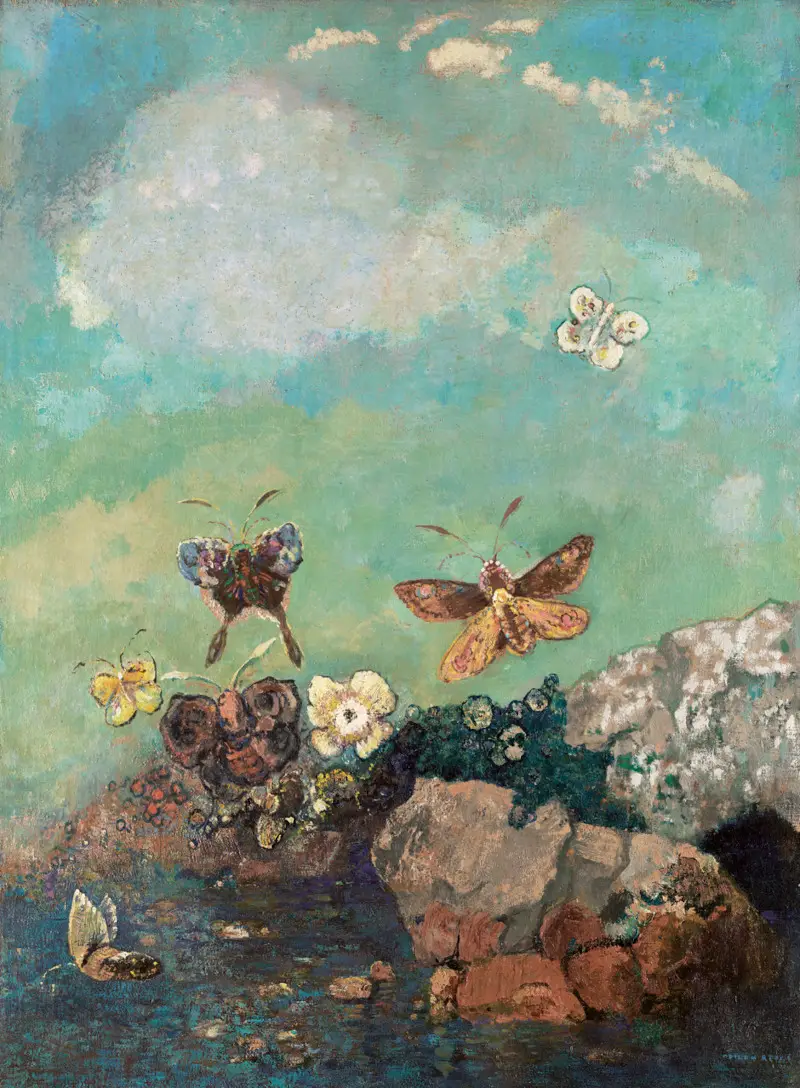Discover the most famous Post Impressionist artists, along with information on the movement itself, and how it came about.
Introduction to Post Impressionist Art
Post Impressionist art came about as a means to evolving European art onwards after the considerable achievements of the Impressionists. French art was still dominant at this point, and there remained a strong desire for new artistic styles, with academic influences continuing to fade into the distance. An expressive way of working, where an artist's emotions could be instilled into their work, was starting to gain traction.
There had also been influences from outside Europe across the 19th century that were starting to impact native art. Whilst this was more evident after the turn of the century, we were already seeing Primitive art and Japanese art playing a role in Paris. The key characteristics of Post Impressionist art were new, experimental painting techniques, a rejection of academic teaching, new compositional methods, and a brighter palette in most cases.
List of Famous Post Impressionist Artists
The list below contains leading Post Impressionist artists, though this label covers a variety of sub-niches, uncluding Pointilism and Naïve art. The overall group remains much loved today, with their work still feeling somwhat contemporary, despite coming about over a century ago. Their achievements would help bring about abstract art int the early 20th century, as well as Expressionism and Cubism, to name just a few.
Unlike the Impressionists, the list below would not spend their time together as a collective. Whilst Van Gogh and Gauguin may have lived together for a short period, these artists were geographically diverse and connected only by their embrace on modern artistic ideas and styles. This is perhaps why there is such a divergence in styles across this list of artists, with each one allowed to fully embrace their own artistic ideas and desires.
Vincent van Gogh
Vincent van Gogh is perhaps the most famous Post-Impressionist artist of them all. His work rose to a new level after he relocated to the south of France, a move which brought brigter colors into his oeuvre. Gone were the darker tones found in the likes of Potato Eaters, for now he was living in a region saturated by light, and his work mirrored this change.
Van Gogh was an emotional man, suffering from mental illness throughout his life, and he would use his art as a means to self-therapy, helping him to focus on something he loved. His Post-Impressionist work was full of expression and soul, and many rejected his work initially. Later generations were able to appreciate the genius behind works such as Irises and Sunflowers, and he was always popular with avant-garde artists.
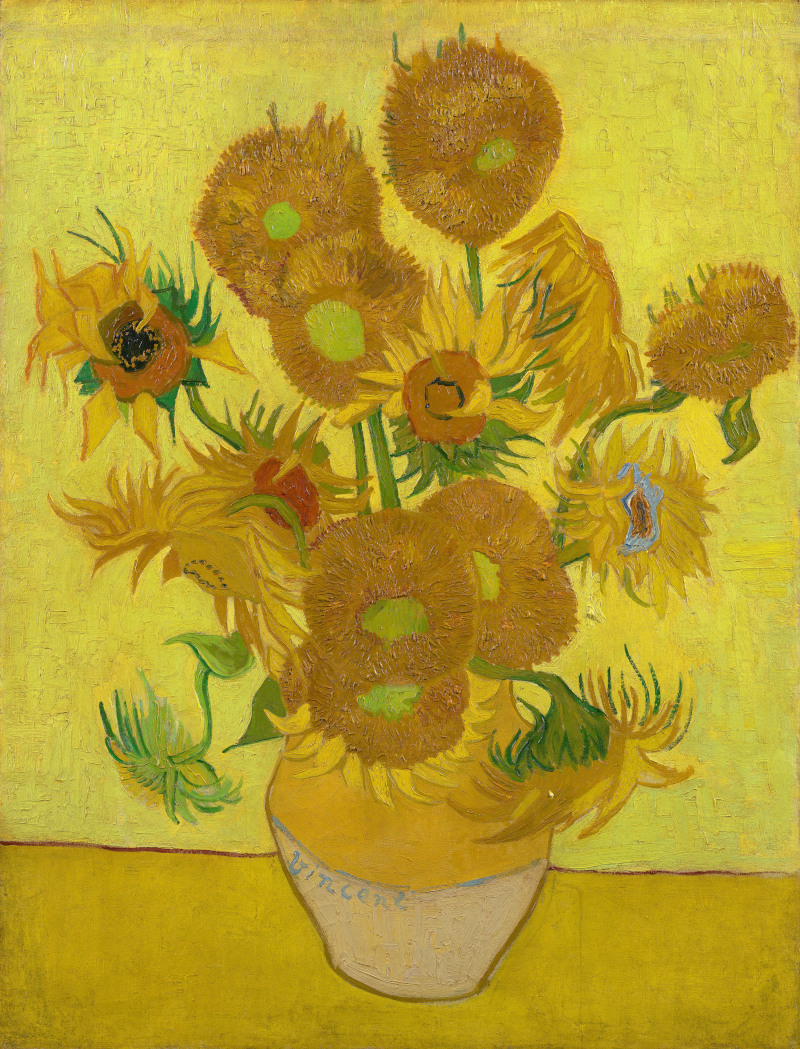 Vincent van Gogh's Sunflowers - Famous Post Impressionist Painting
Vincent van Gogh's Sunflowers - Famous Post Impressionist Painting
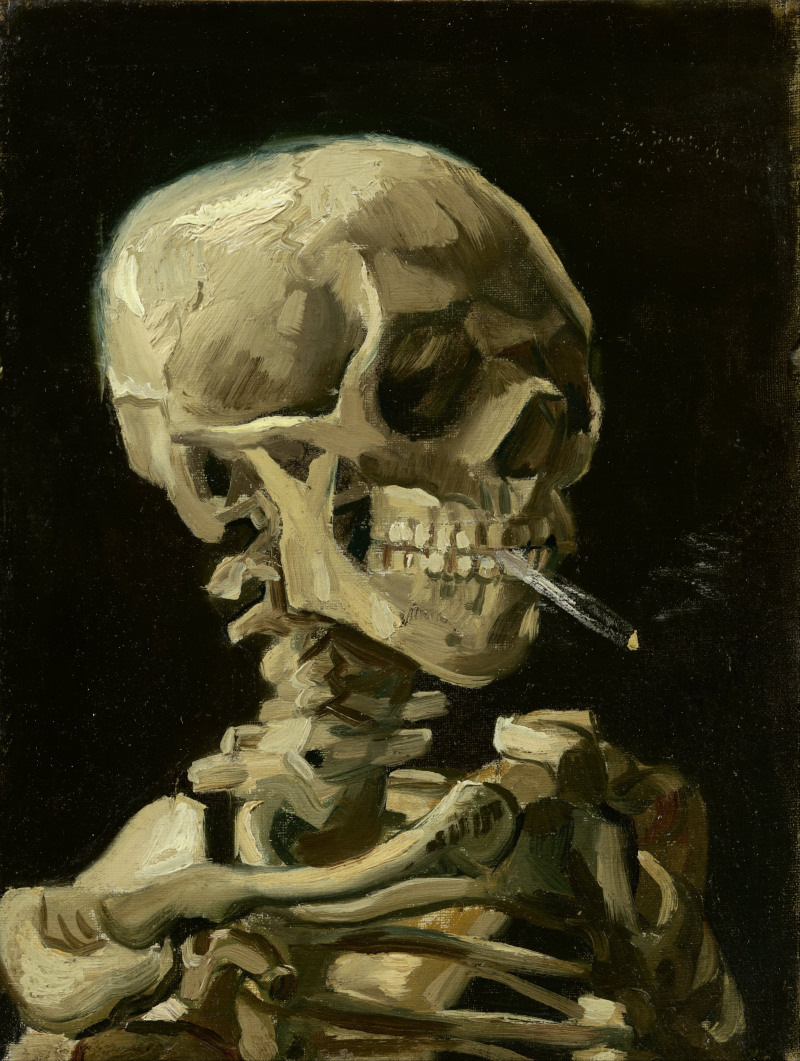 Skull of a Skeleton with Burning Cigarette
Skull of a Skeleton with Burning Cigarette
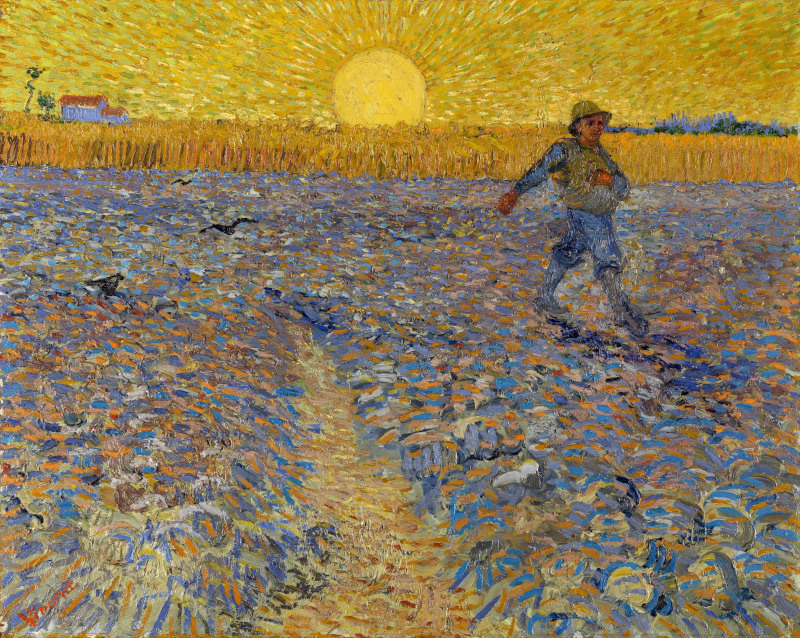 The Sower Sunset Painting by Vincent van Gogh
The Sower Sunset Painting by Vincent van Gogh
Paul Gauguin
Paul Gauguin embraced a primitive form of art which was inspired by his time living amongst non-European cultures, which he seemed to prefer. Spells in the likes of Tahiti helped him to detach himself from the normal artistic route taken in his native France and this brought about an expressive, creative output. He famously lived with Vincent van Gogh for a period, and they were known to appreciate each other's work.
Gauguin's best known works focused on the lives of the islanders that he came across, whose alternative way of life fascinated him. Having travelled extensively, he became unwilling to settle back in Europe but kept a connection to the continent in order to sell his work. Some have labelled his work as Primitivism, though most place it under the less specfic term of Post Impressionism.
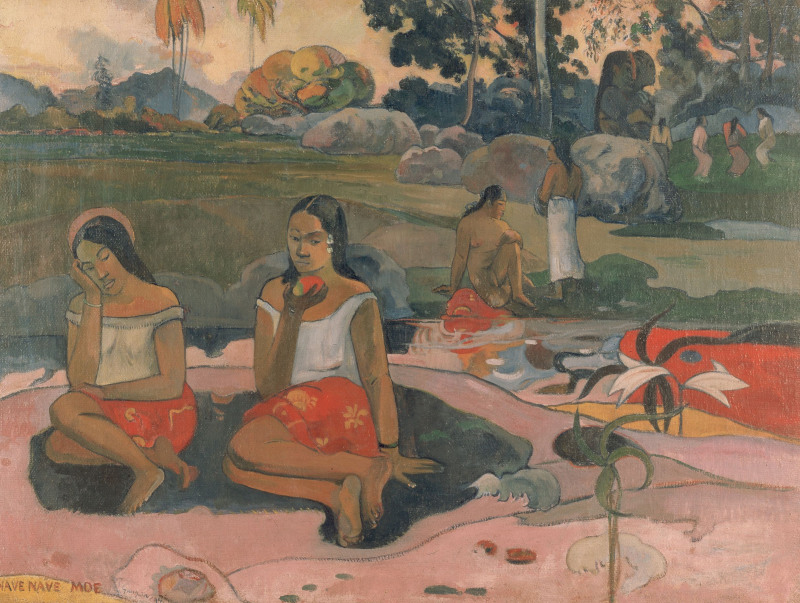 Sacred Spring, Sweet Dreams by Paul Gauguin
Sacred Spring, Sweet Dreams by Paul Gauguin
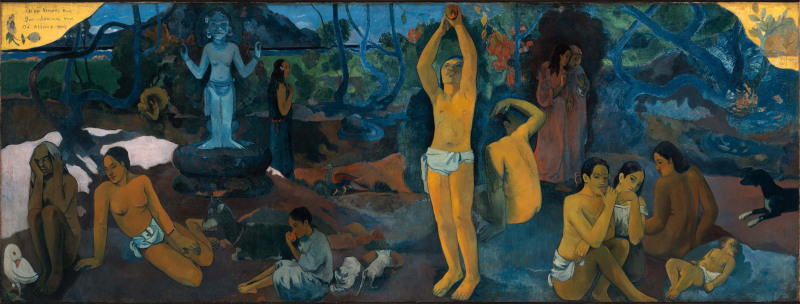 Where Do We Come From What Are We Where Are We Going
Where Do We Come From What Are We Where Are We Going
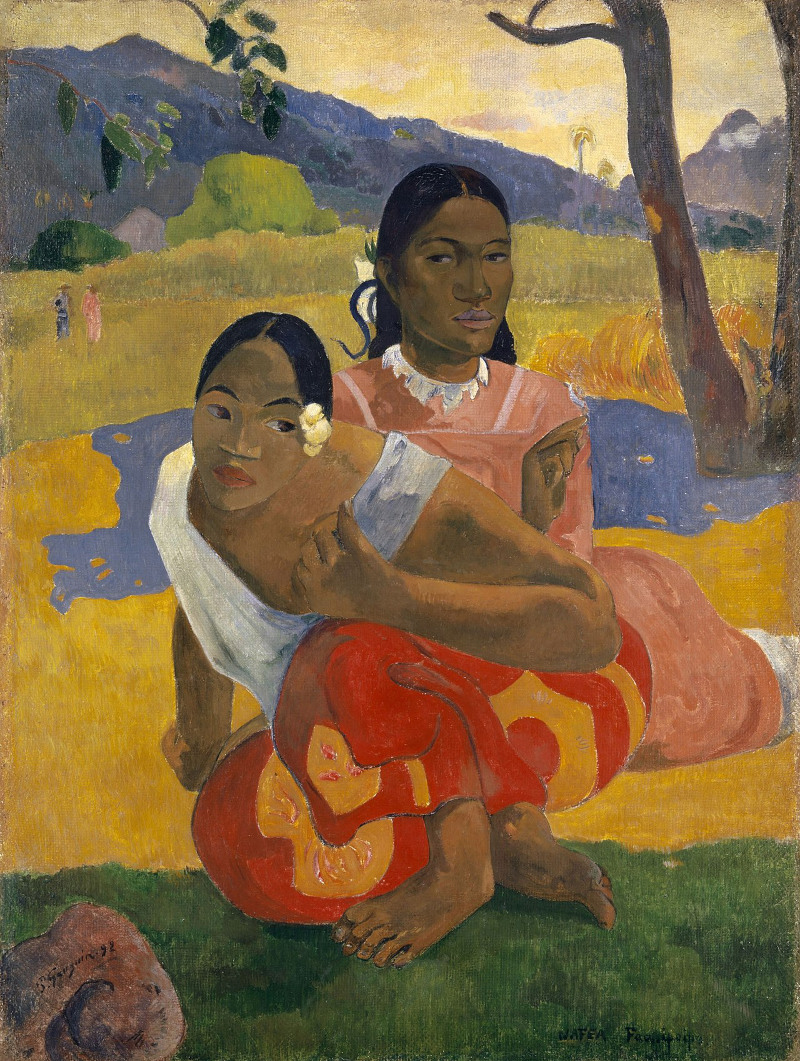 When will you Marry by Paul Gauguin
When will you Marry by Paul Gauguin
Paul Cezanne
Paul Cezanne is regarded as the father of Post Impressionism, having worked alongside famous Impressionist artists in a number of exhibitions before breaking off into his own artistic direction. Cezanne started to facture his paintings in a manner which would later inspire Cubism artists such as Pablo Picasso and Georges Braque. Cezanne was not easy to deal with, in a personal capacity, and perhaps this explains why he worked in a unique manner.
Cezanne would cover the stunning French landscape as well as scenes of local life, but moved beyond the Impressionist approach, adding more feeling, and expression to his work. It felt like the next step of the evolution of European art and he became highly regarded within the industry on a technical level. He is generally regarded as the connecting point between the mid-19th century and early 20th century art movements.
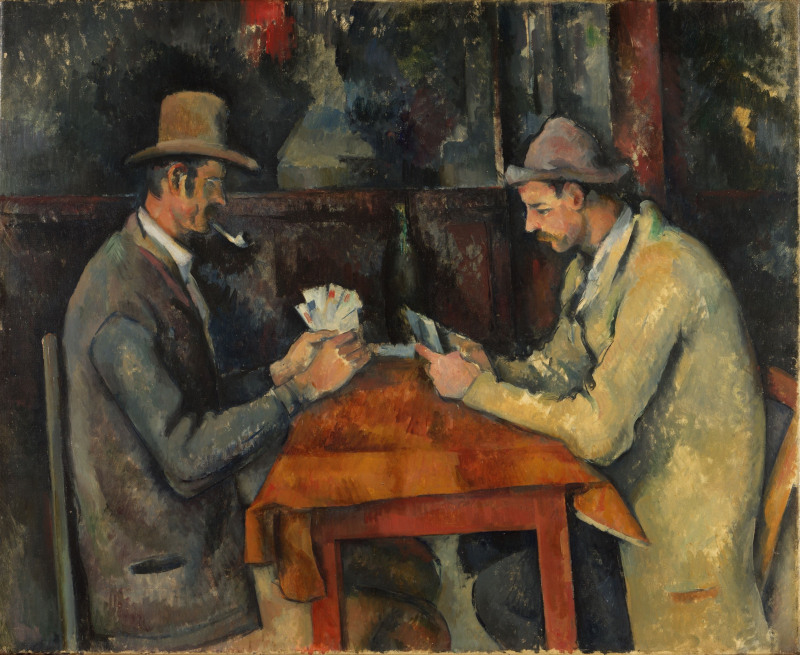 The Card Players by Paul Cezanne
The Card Players by Paul Cezanne
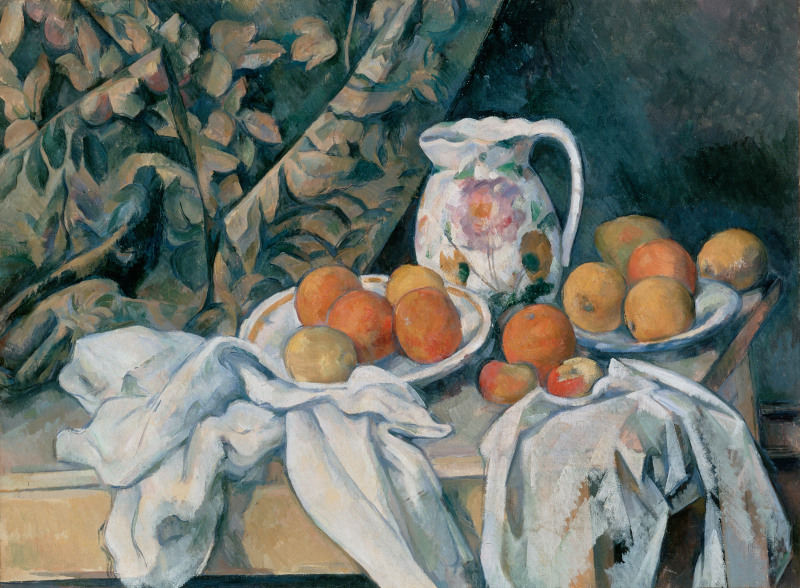 Still Life with a Curtain Still Life Post Impressionist Painting
Still Life with a Curtain Still Life Post Impressionist Painting
Henri Rousseau
Henri Rousseau was a truly unique artist who is often labelled as a Post Impressionist artist, though a more accurate description would be Naïve art or Primitivism. As a self-taught painter, Rousseau was able to benefit from a free mind, unhindered by institutional tutoring which had led to many others artists merging stylistically. His approach would therefore prove controversial, though he received plenty enough support to make a success of his career.
Rousseau's work as a Post Impressionist painter is most famous for his jungle paintings (The Dream), which were both charming but also entirely unique. They possessed a child-like, cartoon quality to them, but with sufficient technical and compositional skill to be taken seriously. His work has lasted the test of time as well as any other, and still feels contemporary and modern, over a century later.
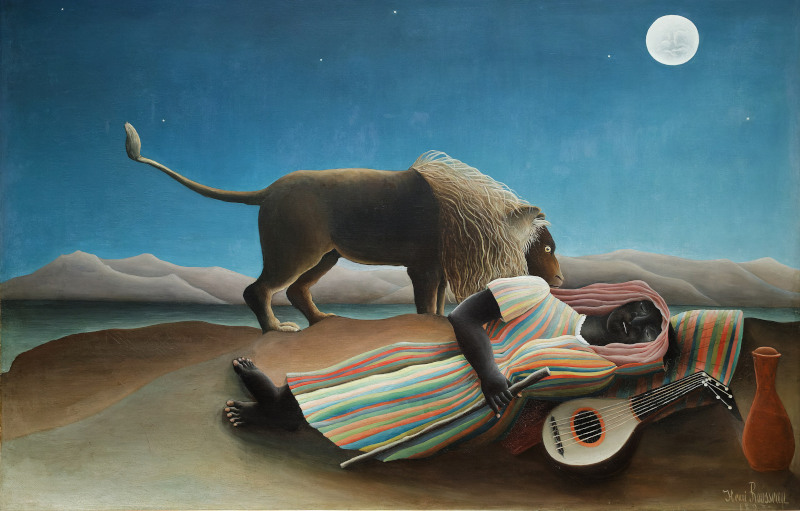 The Sleeping Gypsy by Henri Rousseau
The Sleeping Gypsy by Henri Rousseau
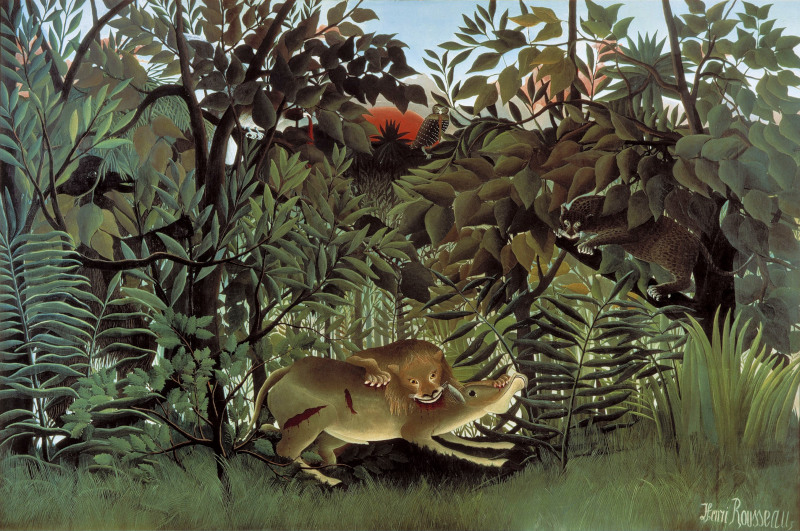 The Hungry Lion Throws Itself on the Antelope - Animal Painting
The Hungry Lion Throws Itself on the Antelope - Animal Painting
Georges Seurat
Georges Seurat was a famous Post Impressionist artist who developed the Pointilist technique in which a scene would be formed from a complex series of dabs of points, or dots. The skill would be in mixing and selecting the colors so that the image would form in front of the viewer's eyes, once they were standing at the correct distance - too close, and they would just see the individual dots, and lose any understanding of the overall composition.
In order to produce Pointilist paintings, Seurat would have to study a scene many times, sketching elements individually and creating oil sketches too before commencing the main work. The larger artworks would take many months to complete but works such as Sunday Afternoon on the Island of La Grand Jatte and Bathers at Asnieres have become some of the most famous European paintings in history, and remain highly regarded today.
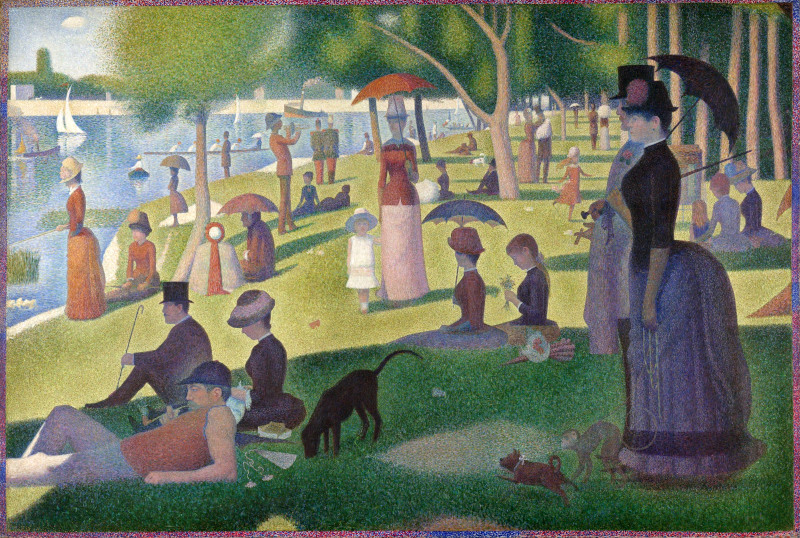 A Sunday Afternoon on the Island of La Grande Jatte by Georges Seurat
A Sunday Afternoon on the Island of La Grande Jatte by Georges Seurat
Henri de Toulouse-Lautrec
Henri de Toulouse-Lautrec was a poster illustrator and designer who is regarded as a member of both the Art Nouveau and Post Impressionist movements. He helped to advertise Parisian cabaret acts through his posters, and even managed to promote individual actresses who became the stars of that era. He was a lover of the theatre scene himself, and found it much more inclusive than society as a whole. Suffering with multiple disabilities, Henri found solace in this community, and was seen a non-threatening eccentric with considerable technical ability.
The artist is best known for his depictions of the Moulin Rouge, and some of his art was influenced by Japanese design, where composition could be handled in more inventive ways. Toulouse-Lautrec also helped to raise the profile of illustration and poster art, establishing it as a respected art form, rather than merely a commercial concern. This opened up opportunities for other French illustrators who followed on afterwards.
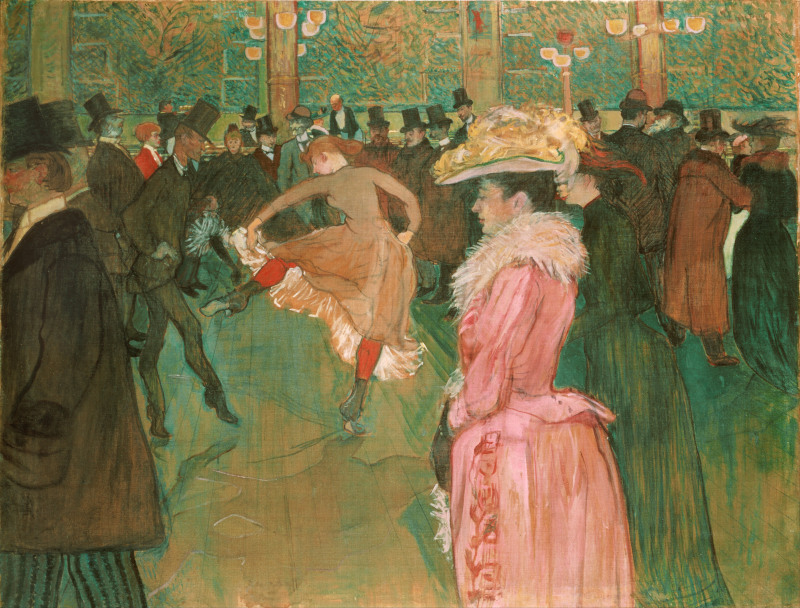 At the Moulin Rouge by Henri de Toulouse-Lautrec
At the Moulin Rouge by Henri de Toulouse-Lautrec
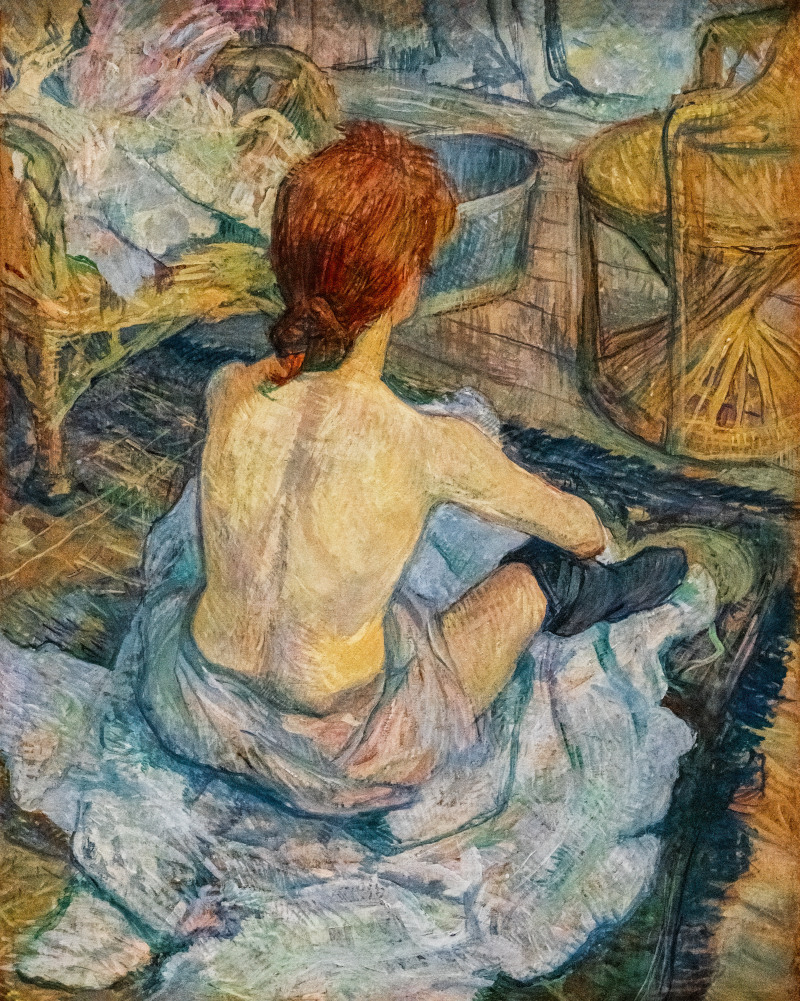 La Toilette Female Portrait Painting
La Toilette Female Portrait Painting
Odilon Redon
Odilon Redon was a French Post Impressionist painter who made use of symbolism within much of his work. His style and content was relatively unique, composing paintings in an imaginative way and focusing on elements that were not normally used by related artists. Nature and figurative art was key ingredients, with still life flower arrangements being amongst his most popular strand of work. Redon was also a highly skilled draughtsman, which laid the foundations to many of his paintings.
Redon produced dream-like visuals in his paintings, similar perhaps to Chagall, and it is hard to categorise his work, with so much variety appearing across his oeuvre. Redon has retained a strong following and suppor from the public, despite being a relatively lesser known Post Impressionist artist during his own career. He can be considered one of the most expressive members of this informal collection of artists.
Paul Signac
Paul Signac was a French Neo-Impressionist painter who truly mastered color within his work. He worked alongside Seurat to develop the Pointilism movement, and focused mainly on landscape art. His bright tones were uplifting and positive, helping to reject darker styles that had been found in French art up to the earlier rise of the Impressionists.
Signac's early paintings were relatively Impressionistic in style, but over time he evolved into something more original and impactful. His role in developing Pointilism is sometimes forgotten because of the focus on Seurat, but he remains a highly regarded painter whose work continues to attract a modern audience.
.jpg) Capo di Noli Post Impressionist Painting (Pointilism)
Capo di Noli Post Impressionist Painting (Pointilism)
Pierre Bonnard
Pierre Bonnard was a French Post Impressionist painter, draughtsman and printmaker who produced a varied, unique body of work. He joined a formal group known as Les Nabis and focused strongly on color within his work. Bonnard was influenced by Japanese art, and may have collected prints for his own collection as a means to learn new artistic techniques. His use of perspective and composition were highly modern, leading to criticism and support in equal measure.
Themes such as ballet dancers and landscapes had been borrowed from the Impressionist, but he would carefully instill his own techniques to re-imagine these themes. There are elements of many later movements within his work, helping to underline the impact that he made, such as Fauvism, Expressionism and even Abstraction to a lesser degree.
 Woman with a Dog by Pierre Bonnard, Inspired by Japanese Art
Woman with a Dog by Pierre Bonnard, Inspired by Japanese Art
Paul Ranson
Paul Ranson was another member of the Les Nabis movement, but learnt his trade through more traditional art routes. Bright color was a key part of his success, and there are elements of Gauguin's approach within his work, with Primitive figurative art suiting his contemporary approach. Nature featured regularly in his paintings, including a number of tree paintings and other unusually composed landscape scenes.
Apple Tree with Red Berries is a particularly highly regarded artwork and immediately reminds us of famous Japanese painters, such as Hokusai and Hiroshige. Japanese art influenced many of the painters listed in this article, with Japan opening up to the world in the 19th century which allowed some of their woodblock prints to be exported across to Europe. A number of artists would collect and replicate these exciting items, eventually incorporating elements of their style into their own.
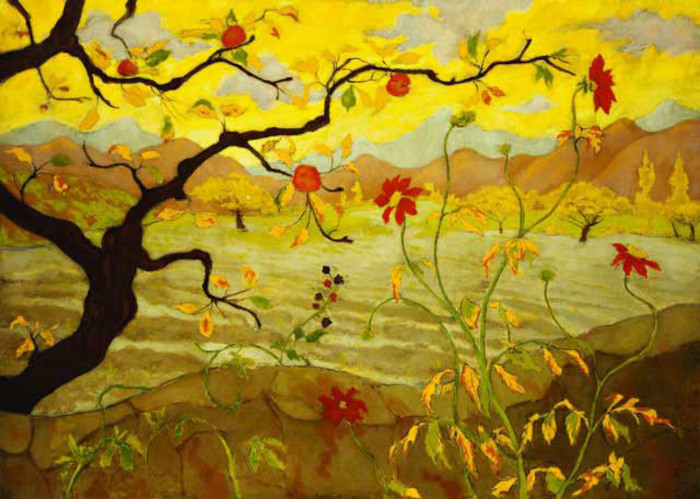 Apple Tree with Red Berries by Paul Ranson
Apple Tree with Red Berries by Paul Ranson
Henri-Edmond Cross
Henri-Edmond Cross was involved in the Neo-Impressionism, Pointillism and Divisionism art movements. His bright color schemes will remind many of the later Fauvist era, whilst his popular approach combined different styles together in a consistent, fluid format. Landscape painting was his preferred genre, though figurative art was often combined into the scene. Cross came from a British-French family, but achieved all of his success in France, at a time when the nation was leading the art world.
Cross worked in a Realism style earlier in his career, incorporating darker tones before switching to a more positive, warm set of colors as his style evolved. Many consider him to have been influential on Henri Matisse's push towards Fauvism which followed on in later decades. In truth, most viewing his work for the first time will be more aware of his connection to the work of Seurat.
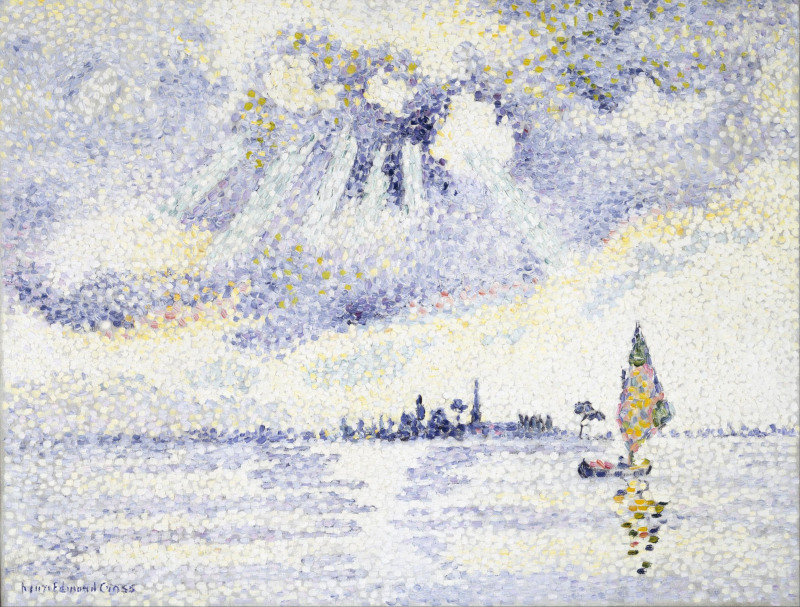 Sunset on the Lagoon, Venice by Henri Edmond Cross
Sunset on the Lagoon, Venice by Henri Edmond Cross
Introduction: Exploring the Evolution of Post-Impressionist Art
The purpose of Post Impressionist art was to move on from the earlier successes of the Impressionists, and to forge new, even more creative paths for artists of the future. This umbrella term relates to a number of different art movements which appeared across Europe, with France serving as the central hub. These new groups included the Nabis, Pointillism/Divisionism, Primitivism and also specific artists who forged entirely unique paths of their own.
This was essentially the next phase of the evolution from rigid Academic art, all the way up to the conceptual, contemporary art styles which appeared relatively recently. In order to understand Post Impressionists art, we must examine each and every facet of it, including the full gamit of styles that appear below this banner.
Precursors to Post-Impressionism: Impressionism and its Influence
Impressionism brought about a more expressive, less photo-realistic approach. It was inspired by the great Romanticist artists, such as JMW Turner. The Impressionists observed the impact of conditions on objects, examining the effect of light to near-obsessive levels. They also covered objects in a relaxed manner, with rough brushstrokes, with the intention of giving an "impression" of something, hence the name.
Just as this approach had finally been accepted by the mainstream, after facing years of rejection, so new artists attempted to push things on once more. Cezanne provided this link, having worked alongside the Impressionist himself, but his solitary character encouraged to forge his own path which would eventually bring about the Cubist era that followed.
Women Artists in Post-Impressionism: Challenging Gender Norms and Conventions
Suzanne Valadon is perhaps the most famous female Post Impressionist artist, with few others known from this period. Women artists had made huge contributions to the French Impressionist movement, with a number more appearing in the American Impressionist style. There would also be a large number of female Expressionist artists, but most of the Post Impressionists were male.
Suzanne Valadon focused on figurative art for much of her work, regularly capturing the female body in a series of imaginative poses. Her alternative view point allowed her to create a unique body of work which in recent years has received more attention. Just as with the female Impressionists such as Morisot and Cassatt, she would draw attention to the lives of women in society in a manner than male artists could not.
Georges Seurat and Pointillism/Divisionism: Revolutionizing Color and Technique
Georges Seurat, along with Paul Signac, studied the theory of color and used this knowledge to create new painting methods. Their approach involved reducing a composition into sections of color, which would be applied individually, in a manner akin to a dot-to-dot image. Rather than forming lines, though, they would create series of dots of paint which when presented together, would produce an image.
Pointilism and Divisionism would become one of the advancements found in the overall Post Impressionist world, with Seurat generally being regarded as the leading exponent. Alongside these carefully crafted layouts, bright color tones were also common and this would impact the Fauvists, who used color as a dominant factor within their own work, as did Kandinsky and Klee in later movements.
Paul Cézanne and the Shaping of Post-Impressionist Style
Paul Cezanne is seen by many as the father of modern art, having transitioned within his own career from Impressionist art towards a more abstract, expressive manner. He opened doors and minds for later artists, with the Cubists most clearly impacted by his work. He was highly regarded by fellow artists who appreciated the innovations that he delivered, despite the criticism that he received in some quarters.
Cezanne covered similar topics to the Impressionists and would exhibit alongside them for a number of years before his style started to diverge from theirs. He would consider how elements formed together, and reduce these into fractal plains that mastered different angles at the same time. The later Post Impressionists would be less subtle than Cezanne, embracing these ideas to the full.
Van Gogh's Impact: Emotion, Expression, and Symbolism in Post-Impressionism
Vincent van Gogh's arrival in France brought about an extraordinary body of work in which he attempted to stave off the demons of his inner mind, through bright, expressive artworks. Despite being unsuccessful commercially, during his own lifetime, his contemporary work today command extraordinary valuations. He found solace, to a degree, in the countryside and captured local scenes in a manner never seen before.
Van Gogh would inspire many artists that followed, thanks to his use of thick layers of paint, often unrefined, and also bright tones that left out at the viewer. His sunset paintings were ideally suited to this approach, and he also produced tree paintings that created excitement out of relatively simple conpositions.
Gauguin's Quest for Primitivism: Exoticism and Non-Western Influences
Paul Gauguin loved to travel and discovered a love for island life in Tahiti. He also experienced other related islands a grew to appreciate their traditional culture which would eventually influence his artistic style. Though he returned to France several times, he no-longer felt comfortable in the western world, using it only to sell his paintings. His paintings would become termed as Primitivism, which marked his influences and this movement became part of the Post Impressionist world.
Elognated forms, unusual methods of composition and bright color were used to tackle and capture island life, with Gauguin particularly interested in the young women who he came across on the island. He also spent time with Van Gogh, collecting some of his Sunflower paintings and immersing himself in the new, contemporary artistic styles appearing in France at the time.
The Nabis Group: Mysticism and Symbolism in Post-Impressionist Art
Les Nabis was formed by Pierre Bonnard, Édouard Vuillard, Félix Vallotton, Maurice Denis, and Paul Sérusier. They were deep-thinking artists, who were eventually joined by a number of others as their success started to grow. They returned to the basics of forming visual displays from simple arrangements of shape and color and much of their work displayed elements of abstraction. It was entirely new for the period and helped to bring new ideas into the overall Post Impressionist era.
They did not stick to painting alone, and also took on ceramic decoration and stained glass window, both of which would have something of a revival in the late 19th and early 20th century. They were inspired by Gauguin, and some similarities can be seen in style, which ultimately mirrored Primitivism, but with some stylistic additions of their own.
Neo-Impressionism: Science, Optics, and the Divisionist Technique
Neo-Impressionism is another term for Pointilism and Divisionism. Essentially, a painting is separated into individual sections, each of which is represented by a single color dabbed onto the canvas. When these series of dots are viewed together from a distance, so the image is formed in the viewer's mind. It is similar to some printing techniques, where individual dots of the print can be seen when looked at closely. The brilliance of this approach is how artists were able to plan every shade of a complex scene, and this approach often required long stages of planning with pencil sketches followed by oil studies.
Fauvism: The Liberation of Color and Form in Post-Impressionist Art
The Fauvists, such as Matisse, loved the clash of colors in their work. Their careful consideration of tone would shock and excite the audience, and they were inspired by earlier members of the Post Impressionist era. There were elements of Primitivism in some of their figurative paintings, where forms could be expressive and only loosely depict the subject.
Color was one of the ingredients within Post Impressionism, as could also later be seen with the Expressionists, such as Klee and Kandinsky who would study and teach the theories behind color selection in art. Whilst the Fauvists were originally derided by many, their impact was considerable and many fellow artists appreciated their work.
Cubism: Shattering Perspective and Spatial Representation
Following on from the likes of Paul Cezanne, the Cubists would continue the idea of altering perspective and reality with objects in their work. Many offshoots of the movement would appear, including Synthetic Cubism, Analytical Cubism and Tubism, but the main approach from Braque and Picasso delivered complex arrangements of still life arrangements.
The idea was to re-imagine angles, essentially seeing something from different perspectives within a static painting, akin to moving around a sculpture. This approach was avant-garde, taking years to be fully embraced by mainstream art critics.
The Legacy of Post-Impressionism: Influence on Modern and Contemporary Art
The legacy of Post-Impressionism is strong and wide reaching. Its many different guises touched on composition, color theory, abstraction, expression and many technical innovations. Modern art would not have come about in quite the same way were it for the likes of Van Gogh, Gauguin, and other artists listed in this article. Their work is today as popular as any, more than a century later.
Paul Cezanne was perhaps the most important member of this collective, having directly bridged the gap between Impressionism and Modern art. He was then joined by like-minded, forward thinking individuals who added additional layers of creativity to help Post Impressionism build such a strong momentum as we passed from the 19th into the 20th century.



